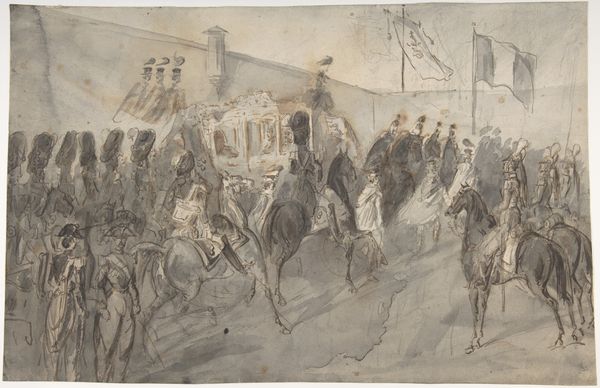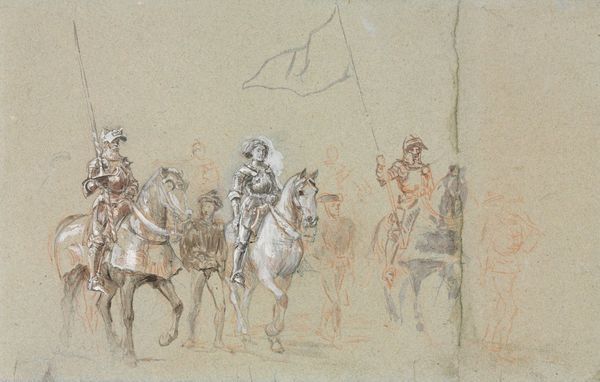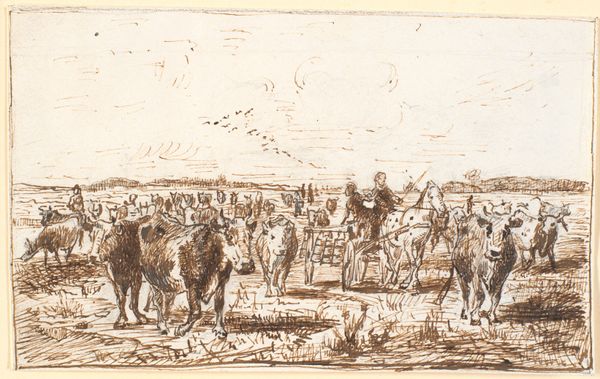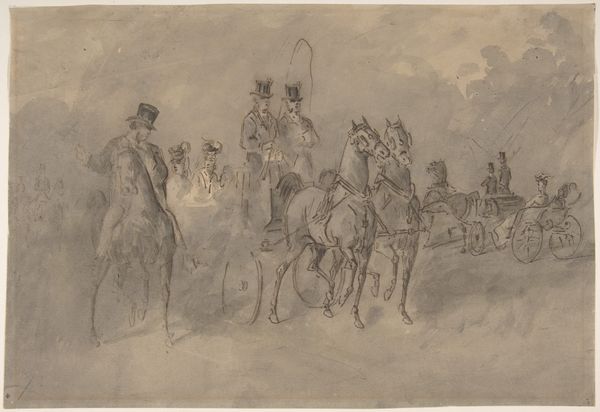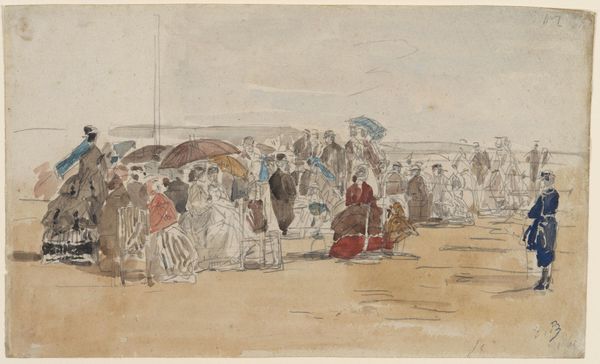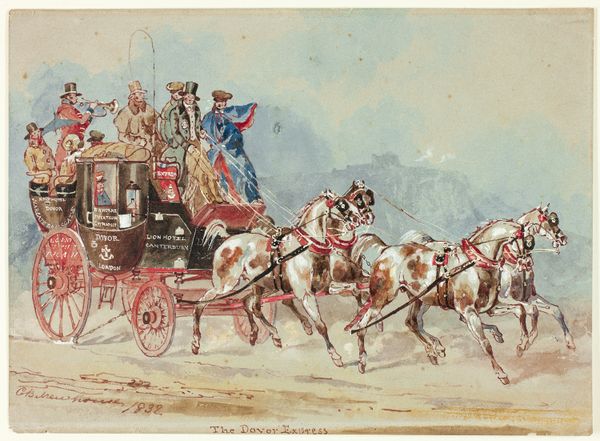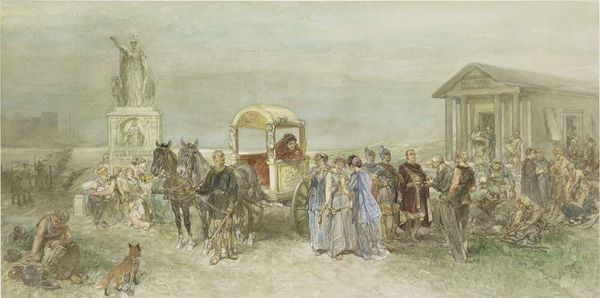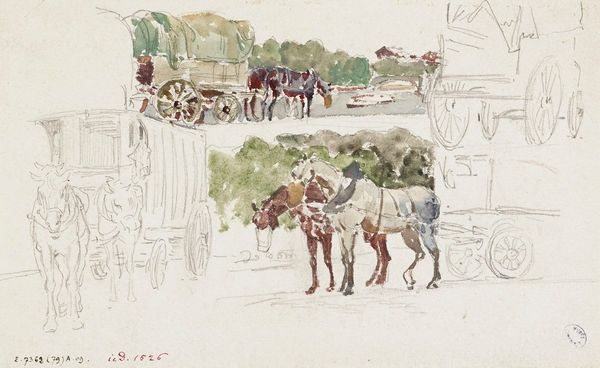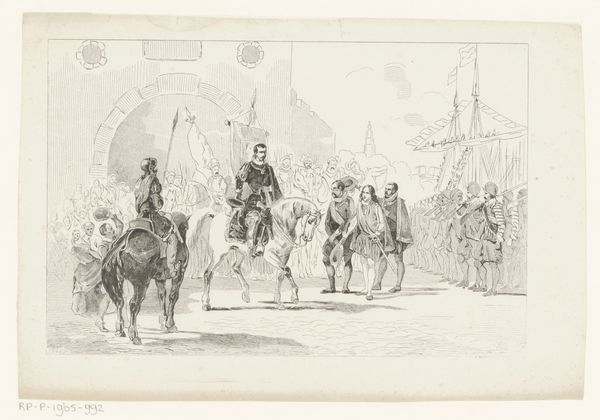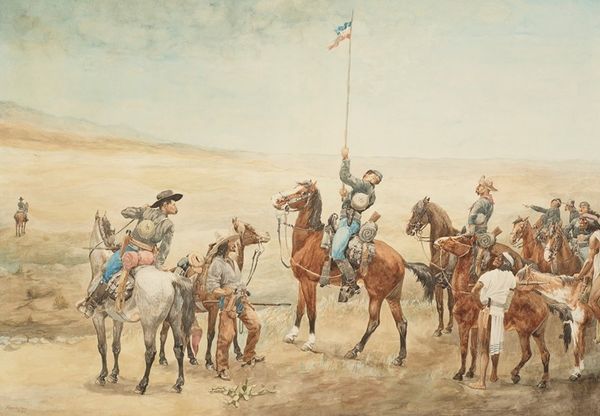
Het vertrek van het Spaanse garnizoen uit Den Bosch na de overgave aan Frederik Hendrik in 1629 1865
0:00
0:00
Dimensions: height 343 mm, width 601 mm
Copyright: Rijks Museum: Open Domain
Curator: Looking at this scene, it seems Charles Rochussen really captured a pivotal historical moment in this watercolor dated 1865. It's called "The departure of the Spanish garrison from Den Bosch after the surrender to Frederick Henry in 1629," and it’s now part of the Rijksmuseum collection. Editor: It’s initially quite striking how subdued the colors are for what should be a triumphal scene. The sepia tones and the rather muted palette seem to dampen the energy of a military victory. Almost a bittersweet memory. Curator: Exactly. Rochussen paints this almost like looking back through the gauze of time, evoking a sense of distance. The composition directs our eye through the masses of soldiers on the left toward the elevated pavilion where presumably, Frederick Henry accepts the surrender. Consider also that this watercolor painting was done centuries after the depicted events. The artist wasn't just illustrating history. Editor: That tented pavilion, adorned with heraldry, it's the visual keystone, isn't it? A point of focus amid the exiting and celebrating troops, that also gives an artificial feel to this military representation. One that tries to reconstruct what could have been. Almost staged like a tableau vivant! It's intriguing how symbols of power and sovereignty play out visually, especially regarding flags and the hierarchy established through clothing. Curator: Symbols are indeed everywhere. It almost encapsulates an epoch. Note, how the military clothing differs, between the old and new, giving us an overview of how the new flags now symbolize something very different to what the older ones did at that period of time, for example. Also, I'd argue the artist doesn’t sensationalize. It offers a calmer, more reflective meditation on the transition of power. Editor: I’d agree, and the romanticized brushstrokes definitely soften the stark reality of war. So we have the suggestion of an historical event more than the graphic representation of a particular military showdown. One must note as well that he chose watercolor, instead of the far more "sturdy" medium of oil painting. Curator: In the end, it prompts contemplation, rather than celebration, of this historic event through the passage of time. It asks more questions about memory and consequence than it answers about triumph. Editor: Yes, an image heavy with social context. One that invites reflection on how we continue to frame pivotal events.
Comments
No comments
Be the first to comment and join the conversation on the ultimate creative platform.

